#royal ceylon
Photo


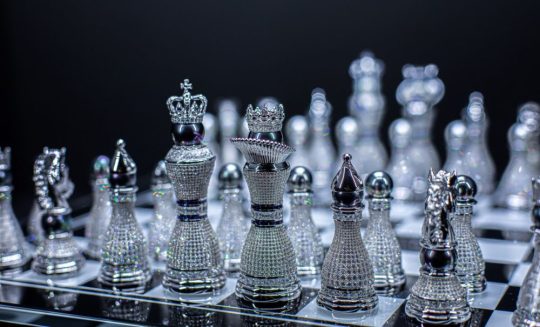
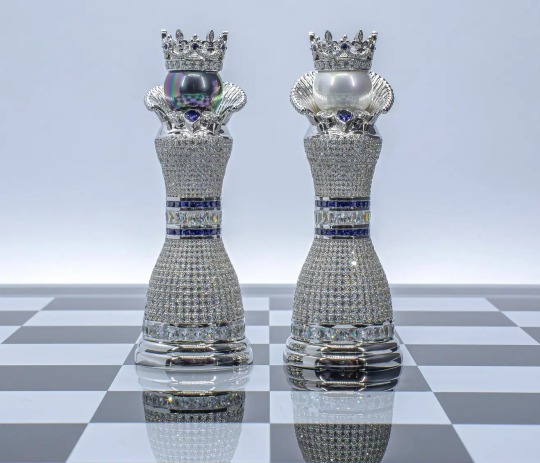
Colin Burn‘s Pearl Royale chess set !
Encrusted with 513 carats of GIA-certified diamonds along with blue Ceylon sapphires and South Sea pearls.
#art#design#chess set#chess#colin burn#pearl#royale#diamonds#sapphire#luxurious#overdose#billionairelife#GIA-certified#blue ceylon#south sea pearl
258 notes
·
View notes
Text
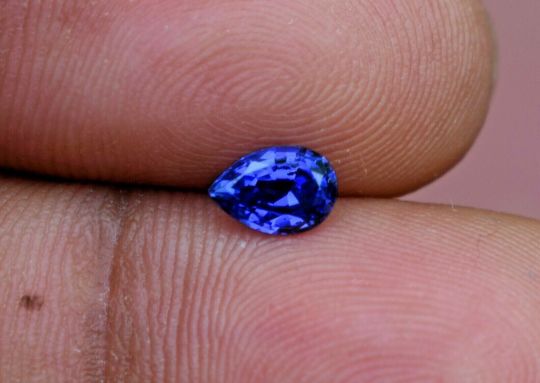
0.72 Ct Cornflower Blue Sapphire. Natural, Unheated, Sri Lankan (Ceylon) Origin, VVS Clarity , Free EMS Shipping, Price : 450 USD, Paypal Accepted, Returns Accepted.
#padparadscha#sapphire#natural sapphire#ceylon sapphire#sri lankan sapphire#pink sapphire#blue sapphire#yellow sapphire#pear shape#etsyshop#etsy store#etsy shop#sihala gem zone#cornflower blue sapphire#royal blue sapphire
1 note
·
View note
Text
#blue sapphire#blue sapphire sri lanka#blue sapphire gemstone#natural blue sapphire#sri lanka#ceylon blue sapphire#sri lanka sapphire#blue sapphire gemstone benefits#blue sapphire stone#blue sapphire ceylon#blue sapphire stone benefits#blue sapphire stone effects#natural blue sapphire sri lanka#royal blue sapphire#sapphire#blue sapphire sri lankan natural gemstone#sri lanka blue sapphire#sri lankan blue sapphire#sri lanka giant blue sapphire
0 notes
Note
I hit send too early
Ceylon cinnamon sticks are a thing and if you eat too many, for idk whatever fucking reason you would not have a good time
I mean I’d imagine that’d be the case with cinnamon on general…………we all remember the cinnamon challenge, regretfully
also yeah I always associate the word ceylon with the kind of tea but I mean it’s also the old name for a Whole Ass Country so I don’t know why that’s what I think of immediately. hm. anyway gonna go eat whole cinnamon sticks now
#kibumblabs#also fun fact You Know Who’s name actually had nothing to do with the word ceylon it was literally a coincidence#i made his name up on the spot with zero references other than the vague idea in my head that I wanted it to sound#kinda french maybe kinda chinese and Definitely like a fancy royal twink
1 note
·
View note
Text
Christmas pudding [...] [is] a boiled mass of suet - a raw, hard animal fat [...] often replaced with a vegetarian alternative - as well as flour and dried fruits that is often soaked in alcohol and set alight. [...] [I]t is a legacy of the British Empire with ingredients from around the globe it once dominated [...].
Christmas pudding is a relatively recent concoction of two older, at least medieval, dishes. [...] “Figgy pudding,” immortalized in the “We Wish You a Merry Christmas” carol, appeared in the written record by the 14th century. [...] During the 18th century, the two ["plum pottage" and "figgy pudding"] crossed to become the more familiar plum pudding – a steamed pudding packed with the ingredients of the rapidly growing British Empire of rule and trade. The key was less a new form of cookery than the availability of once-luxury ingredients, including French brandy, raisins from the Mediterranean, and citrus from the Caribbean.
Few things had become more affordable than cane sugar which, owing to the labors of millions of enslaved Africans, could be found in the poorest and remotest of British households by mid-century. Cheap sugar, combined with wider availability of other sweet ingredients like citrus and dried fruits, made plum pudding an iconically British celebratory treat, albeit not yet exclusively associated with Christmas.
Such was its popularity that English satirist James Gillray made it the centerpiece of one of his famous cartoons, depicting Napoleon Bonaparte and the British prime minister carving the world in pudding form.

In line with other modern Christmas celebrations, the Victorians took the plum pudding and redefined it [...], making it the “Christmas pudding.” In his 1843 internationally celebrated “A Christmas Carol,” Charles Dickens venerated the dish as the idealized center of any family’s Christmas feast [...].
Three years later, Queen Victoria’s chef published her favored recipe, making Christmas pudding, like the Christmas tree, the aspiration of families across Britain.
Christmas pudding owed much of its lasting appeal to its socioeconomic accessibility. Victoria’s recipe, which became a classic, included candied citrus peel, nutmeg, cinnamon, lemons, cloves, brandy and a small mountain of raisins and currants – all affordable treats for the middle class. Those with less means could either opt for lesser amounts or substitutions [...]. Eliza Acton, a leading cookbook author of the day who helped to rebrand plum pudding as Christmas pudding, offered a particularly frugal recipe that relied on potatoes and carrots. [...] The high alcohol content gave the puddings a shelf life of a year or more, allowing them to be sent even to the empire’s frontiers during Victoria’s reign [...].
---
In the 1920s, the British Women’s Patriotic League heavily promoted it – calling it “Empire Pudding” in a global marketing campaign. They praised it as emblem of the empire that should be made from the ingredients of Britain’s colonies and possessions: dried fruits from Australia and South Africa, cinnamon from Ceylon, spices from India and Jamaican rum in place of French brandy.
Press coverage of London’s 1926 Empire Day celebrations featured the empire’s representatives pouring the ingredients into a ceremonial mixing bowl and collectively stirring it.
The following year, the Empire Marketing Board received King George V’s permission to promote the royal recipe, which had all the appropriate empire-sourced ingredients. Such promotional recipes and the mass production of puddings from iconic grocery stores like [Sains-bury's] in the 1920s combined to place Christmas puddings on the tables [...].
---
All text above by: Troy Bickham. "How the Christmas pudding, with ingredients taken from the colonies, became an iconic British food." The Conversation. 8 December 2023. [Bold emphasis and some paragraph breaks/contractions added by me. Image and caption shown unaltered as they appear published by Bickham along with the article's text.]
55 notes
·
View notes
Text
Princess Anne’s visit reinforces Sri Lanka-UK bonds - Plaudits for hard work and modest outlook
Published 14th January 2024
By Pramod de Silva
The British Royal Family is changing their outlook following the demise of Queen Elizabeth II and amidst increasing calls for truncating or even abolishing the monarchy.
Indeed, gone are the days when the British Empire was known collectively as a region where the “Sun never sets” as its colonies were located all over the globe, from Sri Lanka (then Ceylon) to South Africa. Now there are only a very few British protectorates left, including the Falklands Islands. All others have either become Dominions with King (Charles III) as the titular Head of State (examples include Canada and Australia) or Republics with no sovereign ties to the British King, such as Sri Lanka and India.

A humble Princess Anne carried her own bags off the plane as she arrived at the Bandaranaike International Airport in Katunayake with her husband Vice Admiral Sir Timothy LaurenceA humble Princess Anne carried her own bags off the plane as she arrived at the Bandaranaike International Airport in Katunayake with her husband Vice Admiral Sir Timothy Laurence.
Yet, the British Royal Family maintains a measure of popularity in the so-called Commonwealth Countries, which are former colonies of Britain, even if their fame has taken a hit in the UK itself particularly following the death of Princess Diana, and the separation of Prince Harry and his wife Meghan Markle from royal life. The couple has since been living in California, USA.
Queen Elizabeth II’s visit
Sri Lankans, for whatever reason(s), do have a soft corner for the British Royal Family, in spite of the mixed colonial legacy in the country. This was evinced when Queen Elizabeth II arrived here for the first time in 1954. This visit was significant for two reasons. The first was that Sri Lanka hadsaman gained Independence from Britain just six years earlier, in 1948. And Sri Lanka was still a Dominion back then.
The second was that this was one of the Queen’s first official overseas visits after her Coronation on June 2, 1953. She wore her Coronation Frock at one of the events in Colombo during this tour. She would go on to occupy the Throne for nearly 70 years. Her next visit to Sri Lanka was in 1981, by which time the country had become a Republic. But judging by the raucous reception she received wherever she and Prince Philip went, her popularity in Sri Lanka was intact.
In between those two visits, the couple became the proud parents of four children – Princes Charles (the present King), Andrew (Duke of York, though now mostly retired from Royal Duties following a string of scandals), Edward (Duke of Edinburgh) and Princess Anne, now known officially as Princess Royal. She thus happens to be the only daughter of Queen Elizabeth.
It is no secret that Princess Anne is the sibling closest to King Charles, ever-ready to steady the ship amidst the turbulent storms that the Royal Family faced in the years following the tragic death of Princess Diana in Paris in 1997. Her scandal-free life and easy going nature had endeared herself to Royal fans all over the planet.

This might explain the buzz surrounding last-week’s official visit of Princess Anne to Sri Lanka to mark 75 years of diplomatic links between the two friendly countries. Given the revolving door that is Number 10, one cannot imagine a better ambassador to mark this occasion than apparently someone from Buckingham Palace – and the hardest working member of the British Royal Family at that. Princess Anne has earned that moniker from the press thanks to her non-stop work for good causes around the world.
A royal expert has explained why the Princess Royal was chosen as the first member of the family to go away in 2024, as she was praised as being “invaluable” to King Charles. Richard Fitzwilliams said: “Princess Anne is an example of what the public most admire in a working royal, she is dedicated, conscientious and prefers a low profile and no fuss.”
First-ever Royal visit for 2024
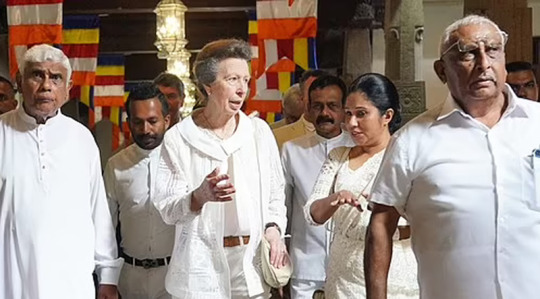
Princess Anne began the second day of her Sri Lanka tour with a visit to the Sri Dalada Maligawa (Temple of the Sacred Tooth Relic) in KandyPrincess Anne began the second day of her Sri Lanka tour with a visit to the Sri Dalada Maligawa (Temple of the Sacred Tooth Relic) in Kandy
In fact, her trip to Sri Lanka gained international media attention due to several reasons, with magazines such as Hello! And People devoting multiple pages to the coverage, not to mention all mainstream British newspapers. After all, this was the first-ever overseas visit by any Member of the Royal Family for 2024. Princess Anne is no stranger to Sri Lanka, having visited the country previously in 1995, as a patron of the Save the Children Fund.
The media were quick to highlight the fact that Anne (73) and her husband Vice Admiral Sir Tim Laurence (68) flew on a commercial airline to Colombo, whereas they could have requested a Government Airbus A330 or other aircraft from the Royal Air Force (RAF). In fact, SriLankan Airlines, the only carrier which flies directly between London (LHR) and Colombo (CMB) could not hide its delight, posting on X under the headline “A Service Fit for a Royal”.
A SriLankan Airlines post said: “We are delighted to welcome onboard Her Royal Highness (HRH) the Princess Royal on her journey from London to Colombo on a three-day official visit to mark 75 years of diplomatic relations between Sri Lanka and the UK. It is truly an honour to extend Her Royal Highness and the delegation our inherent Sri Lankan warmth and hospitality, thereby presenting the first taste of our island home through our service. We thank the HRH for honouring us with her presence onboard and choosing us for the journey.”

Royal commentators and observers were also delighted to note that the couple carried their own bags, both at the points of embarkation and disembarkation. Princess Anne and Sir Tim’s down-to-Earth nature was displayed by them carrying their own bags onto the flight, the commentators said. One eagle-eyed royal writer even noted that one of her bags was from the French brand Longchamp’s La Pliage Line, costing just 115 Sterling Pounds, at a time lesser mortals like to show off bags from the likes of Louis Vuitton costing thousands of pounds or dollars.
A welcome ceremony at the airport saw the two Royals greeted by dancers, music, Union Jack flags and a red carpet. Princess Anne, sporting sunglasses, was received by dignitaries including the British High Commissioner Andrew Patrick and Minister of Foreign Affairs Ali Sabry, PC.
Princess Anne and Sir Tim kicked off their engagements right away, heading first to the MAS Active Factory near the Airport, one of the largest apparel tech companies in South Asia and identified by the UK Fashion and Textile (UKFT) Association as an important Sri Lankan partner. As President of the UKFT, the Princess Royal met staff and toured the facility to hear more about their innovative designs and partnerships with leading UK brands.
Princess Anne, Princess Royal signs the golden book after she arrives for a three-day official visit to Sri Lanka at the BIA in KatunayakePrincess Anne, Princess Royal signs the golden book after she arrives for a three-day official visit to Sri Lanka at the BIA in Katunayake.
Letter from King Charles
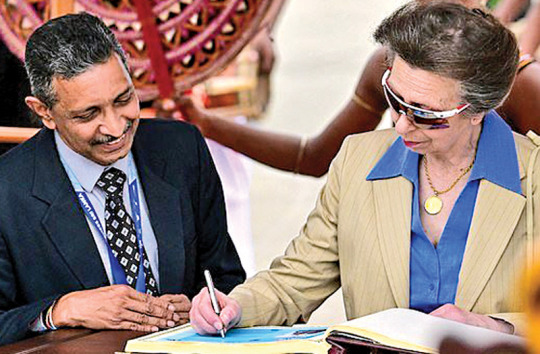
The couple also met President Ranil Wickremesinghe and Prof. Maitree Wickremesinghe at the President’s House. Her brother King Charles had outlined “considerable challenges” that the world is facing in a letter delivered by Princess Anne to President Wickremesinghe during this meeting.
The Royal Couple also got the opportunity of meeting former President Chandrika Bandaranaike Kumaratunga on this occasion. She was the incumbent President when Princess Anne last toured the island in 1995. Royal watchers praised the Princess’s modest outfit worn to this important event. Hello! Magazine described her outfit in this manner: “Putting on a colourful display, the Princess Royal asserted her sartorial prowess in a ravishing red shift dress adorned with blooming pastel flowers. For an additional pop of colour, the royal added a berry-red lipstick, balancing her ensemble with a draped cream scarf and white gloves.” Another royal watcher said that her white gloves worn at the event were a subtle nod to the legacy of her mother.
Princess Anne, with her lifelong affinity to the Save the Children Fund, also took time off her busy schedule of meetings to visit its offices in Colombo and inquire into their programs in Sri Lanka. After unveiling a plaque commemorating the 50th anniversary of Save the Children working in Sri Lanka, she gave an impromptu speech to staff and guests at the charity’s Colombo HQ.

Princess Anne said: “It’s a real pleasure to return to Sri Lanka and the chance to visit Save the Children’s (headquarters) and underline the fact you have been doing extraordinary work here for 50 years.’ And I know, because when I came before it was slightly different, things have changed a lot. But the very fact that you are here and seen as valuable partners to the Government and the departments – that says a lot for what you’ve achieved…So a big thank you to all those who have been part of that journey, thank you all very much.” She also visited the Lady Ridgeway Hospital (LRH) in Colombo.
Princess Anne paid her respects to the Fallen Heroes of World Wars when she laid a wreath in their memory in Colombo, during her first visit to a Commonwealth War Graves Commission (CWGC) cemetery in the Jawatta area as the organisation’s President. They also visited the nearby Vajira Pillayar Hindu Kovil, where Sir Tim dashed a coconut to ward off bad luck. Chief Priest Sachithanantha Kurukal went into the shrine to conduct the pooja as Princess Anne and her husband watched, and they later toured the temple viewing the many shrines to Hindu Gods.
The Royal Couple then left for Kandy, where they paid homage to the Sacred Tooth Relic of the Buddha at the Sri Dalada Maligawa. Dressed in white, Princess Anne was ushered into an inner sanctum, reserved for the temple’s most important guests, to make her offering to the Sacred Relic in private.
Princess Anne engaged in a friendly conversation with Former President Chandrika Bandaranaike KumaratungaPrincess Anne engaged in a friendly conversation with Former President Chandrika Bandaranaike Kumaratunga

Later, the couple travelled to Jaffna, where they toured the famous Jaffna Public Library, which was burnt down by mobs in 1981 and then rebuilt to reflect its former glory. The couple toured the library “where they heard of its significance to the community and met key figures from the fields of education, arts and culture,” said the British High Commission in Sri Lanka. Andrew Patrick, British High Commissioner to Sri Lanka, called the building “a landmark of great significance”. “This important moment marks the first visit by a member of the Royal Family to Jaffna,” he added.
The library was one of the largest libraries in Asia and housed over 97,000 unique and irreplaceable palm leaves books (ola), manuscripts, parchments, books, magazines and newspapers, before its destruction in 1981.
The couple had several other engagements in Sri Lanka before they flew back to the UK after a highly successful visit, which reinforced UK-Sri Lanka ties. Several more events will be held in 2024 to mark this milestone.
Princess Anne’s Sri Lanka visit is her second official engagement of this year, having returned to duties on January 4 to attend the Oxford Farming Conference.
The King and Queen are also set to fly overseas later this year. The couple are expected to visit Canada in May, before flying to Australia, New Zealand and Samoa in October.
As for the Prince and Princess of Wales, they too will be preparing to return to Royal Duties in the coming week, which comes after the family celebrated Princess Kate’s 42nd birthday on Tuesday January 9.
#a lovely summary of an excellent trip 💗#princess anne#princess royal#tim laurence#timothy laurence#sri lanneka
25 notes
·
View notes
Text

King George VI’s speech, with alterations in his own hand, given at a dinner party for the Commonwealth Prime Ministers on 13 October 1948. // © Royal Archives
The events of the Second World War led to a subtle change in relations between the nations of the Empire: there was a much greater feeling of the countries being ‘equal but independent Nations’ than previously. During the war, meetings had been held in London of the Prime Ministers of the Dominions (Canada, Australia, New Zealand, South Africa - and Southern Rhodesia, which had traditionally held a sort of hybrid status between colony and Dominion) and the British Prime Minister to discuss the best way to co-ordinate the war effort. Then in 1948 a conference was held, again in London, this time attended by the Prime Ministers, or their representatives, not only of the old Dominions but also of the new ones of India, Pakistan and Ceylon (Sri Lanka). This conference was arranged to allow the ‘Brotherhood of Nations’ to meet to discuss common problems and issues in the post-war world, and also to introduce the Prime Ministers of the new nations.
The Prime Ministers arrived in London in October and were received by King George VI individually. On 13 October a large dinner was held for them at Buckingham Palace, at which the King made this speech. In it he talked about the ‘high value’ he set on ‘personal contacts between those responsible for guiding our affairs in the different parts of the Commonwealth’. He also said that he would like these meetings to be held from time to time in different Commonwealth capitals. The Commonwealth Heads of Government Meeting is now held every two years, hosted by a different country of the Commonwealth. Addressing the Prime Ministers, the King pointed out that between them they were charged with the good government of more than five hundred million people, but that indirectly their responsibilities extended to many millions more. The world was looking for peace and it expected the Commonwealth of Nations to play a leading part in that process:
Our Commonwealth has always stood for certain principles, fundamental to the good of Humanity; it has never countenanced injustice, tyranny, or oppression. The self-governing members of the Commonwealth have always embraced peoples of different upbringing, social background and religious belief; they have all had this in common that they were peace-loving democracies in which the ideals of political liberty and personal freedom were jealously and constantly preserved.
King George VI, like many other public speakers, often had his speeches typed out on cards such as these, which he would then read and alter if necessary. There are many such examples in the Royal Archives, and they show that by this date the King, who, as is well known, had suffered from a speech impediment earlier in his life, was able to deliver long speeches with confidence.
TREASURES FROM THE ROYAL ARCHIVES (2014)
14 notes
·
View notes
Text

Queen Elizabeth inspects the Royal Guard of Royal Marines from the light cruiser, HMS Newfoundland during her visit to Colombo, Ceylon I April 1954
(Queen Elizabeth II Facebook fan page)
30 notes
·
View notes
Photo
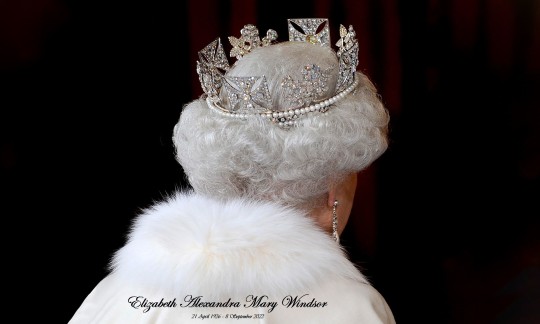
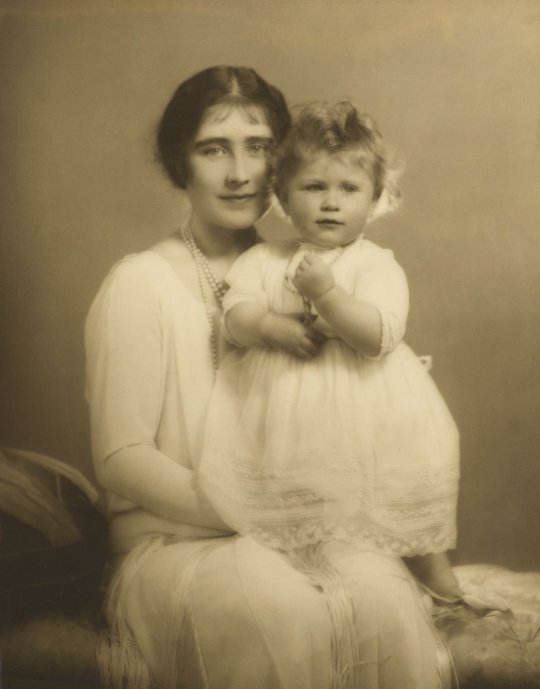


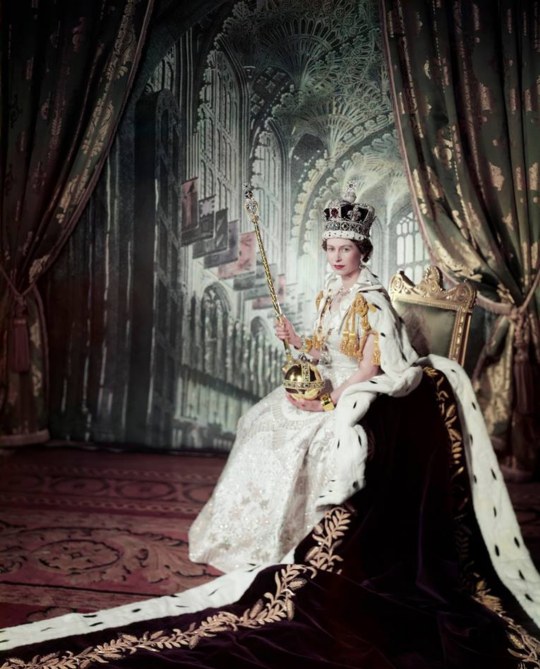
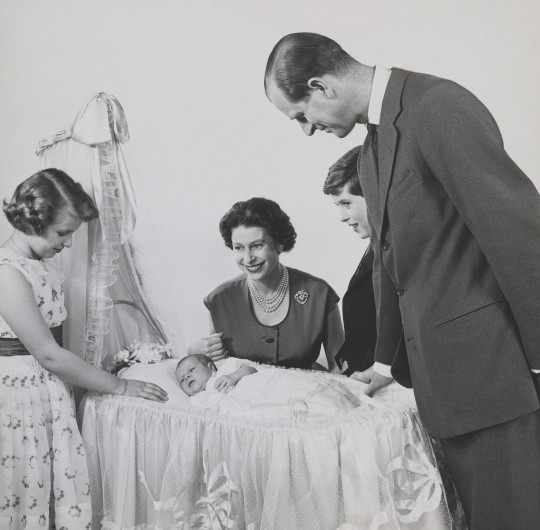


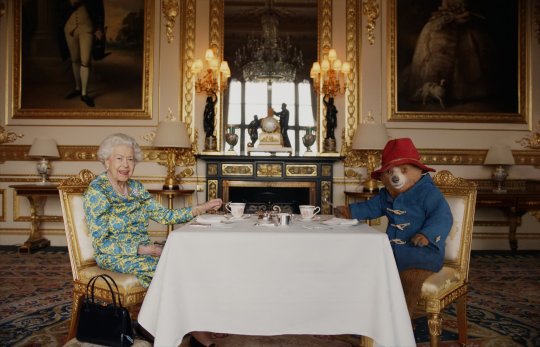

Queen Elizabeth II has died
Queen Elizabeth II, the United Kingdom’ s longest-serving monarch, has died at Balmoral aged 96, after reigning for 70 years.
Elizabeth II (Elizabeth Alexandra Mary; 21 April 1926 – 8 September 2022) was Queen of the United Kingdom and 14 other Commonwealth realms from 6 February 1952 until her death on 8 September 2022.
Her reign of 70 years and 214 days was the longest of any British monarch and the second longest recorded of any monarch of a sovereign country.
Elizabeth was born in Mayfair, London, as the first child of the Duke and Duchess of York (later King George VI and Queen Elizabeth). Her father acceded to the throne in 1936 upon the abdication of his brother, King Edward VIII, making Elizabeth the heir presumptive.
She was educated privately at home and began to undertake public duties during the Second World War, serving in the Auxiliary Territorial Service. In November 1947, she married Philip Mountbatten, a former prince of Greece and Denmark, and their marriage lasted 73 years until his death in April 2021. They had four children together: Charles III; Anne, Princess Royal; Prince Andrew, Duke of York; and Prince Edward, Earl of Wessex.
When her father died in February 1952, Elizabeth—then 25 years old—became queen regnant of seven independent Commonwealth countries: the United Kingdom, Canada, Australia, New Zealand, South Africa, Pakistan, and Ceylon (known today as Sri Lanka), as well as Head of the Commonwealth. Elizabeth reigned as a constitutional monarch through major political changes such as the Troubles in Northern Ireland, devolution in the United Kingdom, the decolonization of Africa, and the United Kingdom's accession to the European Communities and withdrawal from the European Union.
The number of her realms varied over time as territories have gained independence and some realms have become republics. Her many historic visits and meetings include state visits to China in 1986, Russia in 1994, the Republic of Ireland in 2011, and visits to or from five popes.
Significant events include Elizabeth's coronation in 1953 and the celebrations of her Silver, Golden, Diamond, and Platinum Jubilees in 1977, 2002, 2012, and 2022, respectively.
Elizabeth was the longest-lived and longest-reigning British monarch, the oldest and longest-serving incumbent head of state, and the second-longest verifiable reigning sovereign monarch in world history, only behind Louis XIV of France.
She faced occasional republican sentiment and media criticism of her family, particularly after the breakdowns of her children's marriages, her annus horribilis in 1992, and the death of her former daughter-in-law Diana, Princess of Wales, in 1997.
However, support for the monarchy in the United Kingdom remained consistently high, as did her personal popularity. Elizabeth died on 8 September 2022 at Balmoral Castle, Aberdeenshire.
“The Queen is dead, Long live King Charles III”
The Duchess of York with Princess Elizabeth, 30 June 1927 by Marcus Adams (The Royal Collection Trust),
Princess Elizabeth in uniform (1942) by Cecil Beaton (The Royal Collection Trust),
Princess Elizabeth and The Duke of Edinburgh on their wedding day, 20th November 1947 by Sterling Henry Nahum ‘Baron’ (The Royal Collection Trust),
Queen Elizabeth II poses on her Coronation Day on June 2, 1953, in London (Photography by Cecil Beaton),
Queen Elizabeth II with Prince Philip, Duke of Edinburgh and family - 16 Mar 1960 by Cecil Beaton (From the Collection of Queen Elizabeth The Queen Mother),
Queen Elizabeth II and her son, the Prince of Wales, out riding at Windsor Castle I May 18, 1961 (PA),
The Royal coat of arms of the United Kingdom used outside of Scotland,
Queen Elizabeth II Platinum Jubilee 2022 - Platinum Party At The Palace. The Queen Elizabeth II and Paddington Bear having cream tea at Buckingham Palace (BBC Platinum Party at the Palace),
Portrait of Queen Elizabeth II released by The Royal Windsor Horse Show on April 20, 2022 to mark the occasion of her 96th birthday.
#rip#queen elizabeth ii#elizabeth II#queen elizabeth#monarchy#united kingdom#royal#platinium junilee#windsor#markus adams#cecil beaton#theroyalcollectiontrust#paddington#bbc#balmoral#diana#king charles III#princess anne#prince andrew#prince edward#liveunique#history#britsh history#british royality
345 notes
·
View notes
Text
Dilmah Singapore is commemorating Singapore’s National Day with the launch of an exclusive, limited edition Singapura Orchid Ice Green Tea. The new drink is lower in sugar, has no preservatives and has a unique flavour profile originating from 100% locally grown orchids. The drink does taste pleasant with a nice flora fragrant to it though I can’t vouch for its authenticity since I have never eaten an orchid flower before. But this tea got the thumbs up from me, my sis and her friend.
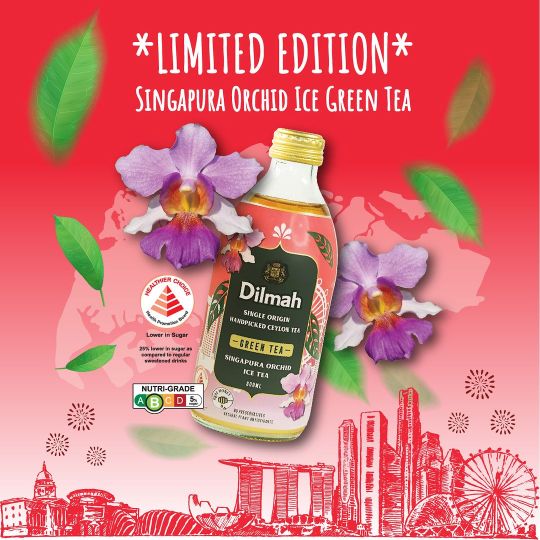


The Ice Teas are available in six other artisanal flavours made with either a green or black tea base. The green tea series is elevated with three different flavours including the light Lady Lavender, sensual Rose & French Vanilla and aromatic Arabian Jasmine. While the black teas feature flavours such as Lemon & Lime, a timeless blend of citrusy twists, White Peach that recalls bright summery days with fruity peaches. Last but not least, there’s Royal English, a signature black tea that is smooth yet full-bodied with light veils of honey.

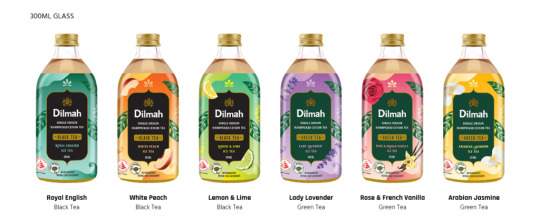

Rose and French Vanilla Ice Green Tea is Inspiringly aromatic with a medium bodied floral note, the flavour of rose with a hint of French vanilla combines with Ceylon Green tea in a perfect embrace. Elegant and sophisticated, a perfect afternoon or after dinner tea. This fragrant ice green tea also deserves an honourable mention, as it is awarded Superior Taste Award by International Taste Institute!

Lady Lavender Ice Green Tea is a blend of green tea accented with floral notes of the freshest lavender bouquet for a drink that is light and calming for evening relaxation. The lavender aroma is not overpowering, just enough to let you know that it is in there.

Selected images courtesy of Dilmah Singapore.
#Dilmah Singapore#New Product#Limited Edition#Singapore National Day#Singapura Orchid Ice Tea#Ceylon#Green Tea#Orchid Flavour#Ice Teas#Rose and French Vanilla Ice Tea#Rose#Vanilla#Flora#Flowers#Lady Lavender Ice Tea#Lavender#Fragrant#Less Sugar#Less Sweet#Beverage#Drink#Buffetlicious
20 notes
·
View notes
Text
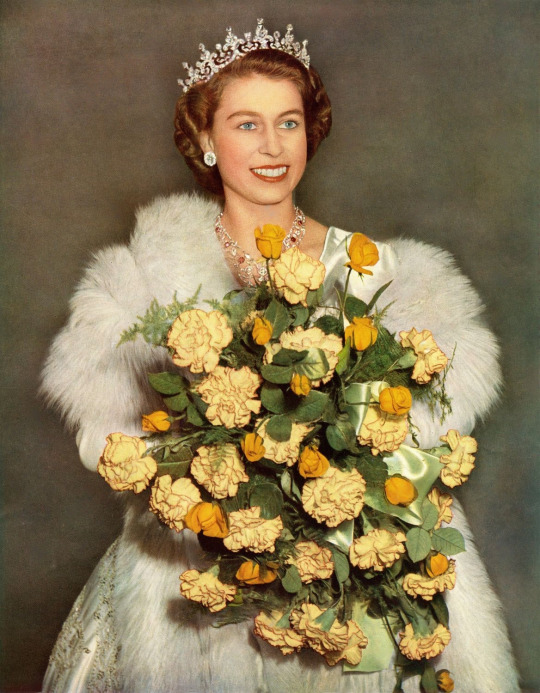
9 February 1952 Issue
Illustrated London News: Royal Tour of Australia, New Zealand, Kenya and Ceylon Special
84 notes
·
View notes
Text
Skeleton Boys Job Revamp + New: Part One
Warnings: Mafia, violence, etc.
Jobs:
Classic is a professor at a college Toriel runs. Vanilla is the Mascot of Monsters and also works as a personal trainer. W.D. is a scientist working for Asgore.
Cardinal works and somewhat owns an animal shelter. Captain is a Lawyer and a volunteer Firefighter. Salamander is a scientist who works with W.D.
King is a Lifeguard and part-time park ranger. Shrike is a gardener and an animal rescuer. Silver is an event planner who sometimes helps with studies on science.
Navy is in the Royal Guard. Syrup is a bee-keeper. Coral is a boat captain and a scientist (though, part-time.)
Obsidian is a bee-keeper, firefighter, and part-time park ranger. Arian is a fitness instructor and a volunteer firefighter. He's a professor in a college.
Clove and Cinnamon have an animal shelter. Cinnamon is a doctor and a therapist. Cinnamon is also a part-time chef. Clary helps his sons around the house but he's retired, but also remains a science consultant.
Chai and Ceylon help with the animal shelter but are also looking to run a farm/ranch. Ceylon is a firefighter. Caper is retired, like Clary, but helps with science and part-time boat driving.
Chive works at an animal shelter while Cassia is a restaurant owner. Coriander is also retired but helps with science.
Caraway is a Private Investigator and Cayenne is a professional boxer.
Caster (Sugar) is a baker and Champignon is a server.
Tarragon makes dresses. Thyme is a model.
Conroy is a professor and science assistant. Rain is in the Royal Guard at the captain. Crane is a scientist and inventor.
Passerine is an animal shelter worker. Heath is a Royal Guardsman. Cran is a scientist and inventor as well as a ferryman.
Latin is a dance teacher and Hip Hop works with him at Latin's studio.
Tango is a popular dancer and singer while working with Latin as a dance teacher. Rhythm is a dance teacher.
Merengue is a dance teacher and DJ is a backup dancer and part-time dance teacher.
Caramel works part-time as a dance teacher while also owning a bakery. Glamour is a bartender. Onyx is a scientist.
Merlot is a bouncer for a bar. Affogato is a chef. Morganite is a scientist and a doctor.
Cappuccino is a fashion designer. Marocchino is a painter. Tourmaline is a doctor.
Hound is a consultant for both the Royal Guard and the mafia, he's also a private investigator. Ebony is a consultant private investigator and part-time food critic. Sirius is an archeologist and scientist.
Conleth is a self-defense teacher and Marion is an idol.
Dolce is a judge and a private investigator. Airen is a captain of a Royal Guard. Ares is a scientist.
Rex is a bouncer and Willet is a painter.
Brass works with Syrup but also is a painter. Jet is a Royal Guard member but also an inventor. Orion is a scientist.
Sharp is a hitman in the mafia along with his brother, Button. Canasta is the head of the mafia.
Spade is a heavy hitter who doesn't hesitate to fight. Slick is a bodyguard and spy. Hex is a person who uses magic to get what he wants (such as turning people into animals, etc.)
Roscoe and Boss deal with the less messy jobs with spying, but Roscoe is also a hitman. Brawl personally trains the new recruits.
Spider is a spy and informant. Lynx is a heavy hitter hitman. Kirill co-owns the mafia.
Jasper is an informant and a hitman. Iron is a heavy hitter hitman. Eros is a hitman and a co-owner of the mafia.
Butcher is a hitman turned informant. Arsenic is a hitman who doesn't miss. Euchre is a retired mafia owner.
Diamond is a quick hitman. Vulpine is a very clever spy. Cess is a co-owner of the mafia.
Lyle is a heavy hitter. Boss is an informant and a heavy hitter. Affray is a retired owner of a mafia.
Grove and Elm own a farm together.
Ridge and Spruce own a farm together.
Roan and Lark own a farm together.
Rigel and Astrophel both study stars and map them.
Canis and Hesperos study planets and map them.
Pyxis and Umbriel study meteor showers and comets.
-----
@kiok0r0 @miscneilleaneous @und3rwat3r-a5tr0naut @hearty-dose-of-ranch @underfell-crystal
#ut au imagines#ut au headcanons#undertale au headcanons#undertale imagines#undertale headcanons#undertale#horrortale#underfell#underswap#fellswap amaranth#underlust#Fellswap Carnelian#horrorswap#horrorfell#dreamtale#inktale#errortale#dusttale#killer sans#mafiafell#mafiaswap#mafiatale#my old au#info dump#swapfell#dancefell#outerfell#outerswap#outertale
6 notes
·
View notes
Note
Yessss I would love to see your tea opinions! Also have you tried silver needle? It’s a white tea that kind of tastes like cucumber water
i havent tried that! any good brands you recommend?
and my grand list of tea brands i love...
brands of color:
al-kbous tea: the fine grain black tea....j'adore. i use it primarily to make chai or when i make tea jams
tazah tea: the damask rose....swoon
alwazah tea (swan brand hehe): i love ceylon tea what can i say. black teas are my fave but i do also enjoy their green tea
wagh bakri: i used to obsessively drink their loose leaf masala chai blend 🙇🏽♀️
three rivers: when i lived near it my local halal market had their kashmiri pink tea and my GOD.....ive been thinking about it for years but i think they stopped having them in stock a couple years ago :(((
the bagged loose leaf tea i get from this random man at a local farmers market: ill have to ask his official brand name again but the assam tea he sells......good god its sooooooo smooth and i love it
el sol de méxico (i think thats the brand...?): just a big ole bag of dried hibiscus for agua de jamaica, also good for making hibiscus jam hehe
nitto kocha: ROYAL MILK TEA....because im basic and its good :(
3:15pm: the rose fruity milk tea is my favorite but i do adore their original milk tea and cafe au lait
white people brands:
downton abbey branded republic of tea: this raspberry rose tea....im sorry but its so good 😔 forgive me my trespasses
nina's paris: their marie antoinette tea which is black tea with apple and rose (see a pattern?)...i love it i do
harney and sons: i have their ~paris~ black tea rn which is alright, but i really Love their victorian london fog...need her....
my correct tea opinions are: black tea is superior, rose in tea is always good if its balanced correctly, fruit is best paired with something floral or earthy, and masala chai is always going to taste better when you make it for someone else
45 notes
·
View notes
Text
I started this forever ago as a follow up to the snippet of Azula finding the tea jar Iroh was preparing for her - its been in my drafts forever, and I don't have much further to take this, but I still wanted write something XD
*************
After Azula finds what Iroh has prepared to become her personal tea jar, she wakes up early the day before she and Zuko are meant to board their boat back home.
There are clues that she and Iroh are... trying to find ways to come closer. Any shreds of a bridge they once had is split and hanging against the mountain’s edge... and yet if used carefully, it could still be a ladder. The planks are simply too far apart to grasp too quickly.
She sighed, sitting on the edge of her bed, looking out to the sky that was still an inky blue.
She got dressed and left her room, but not before slipping a note under Iroh’s door. She went downstairs, down to the shop, where she tried to remember...
Lu Ten’s favorite tea.
It was Ceylon. That’s right. Cinnamon Ceylon.
She could remember the last time she saw him before he and Iroh left with a warriors’ sendoff, off to Ba Sing Se... the very city she stood in right now.
The very city she herself successfully conquered several years ago.
She’d climbed into Lu Ten’s lap and helped herself to a cup of his tea, drizzling heaping amounts of honey into it. She told him how she envisioned herself fighting at the wall, how she would make the Earthbenders cower in terror. Lu Ten had laughed and he promised he would perform her special war dance in her name to assert the Fire Nation’s dominance, to which her big golden eyes lit up.
Then he died. It was the moment she’d realized that even her royal bloodline wasn’t immortal.
The tea kettle whistled. She took a deep breath.
She set up a pai sho table; with the tea kettle and two teacups.
She had no idea how to even start this. She didn’t even know if it was a good idea. She had no idea how to talk to Iroh; and he didn’t know how to talk to her either. Sure they could have chats but... she didn’t have the relationship with any of the others that Zuko had. And even then, her talks with Zuko were still improving. She’d only just lately begun trying again with Mai and Ty Lee.
Her talks with Iroh had been benign enough; but nothing fruitful had blossomed. No true discussions, no dissections of interests. All they’d really tossed about were placid remarks about weather, or ongoing events, or the flowers Iroh decorated the tables with.
Why was this so hard when she used to be so sure of what she said?
She used to be perfect.
She wrung her hands together, still wanting to be perfect. But the man she had always tried so hard to be perfect for didn’t matter anymore; Ozai's time ruling her life was over. Now her perfection was a habit she was desperate to cease; but then, trying to remind herself to not worry about perfectionism was just as painful as obsessing over it.
The door opened, and she jumped, standing to find Iroh there.
He looked into the empty, vast dining room; he was curious, and she could tell just a hint nervous.
“Azula? Is everything alright?” He asked; his usual drawl was softened with sleepiness.
“Y-Yeah. Everything... it’s fine. I just... I just wanted to... to talk before Zuko and I leave later.”
Iroh approached. “About what?”
Azula didn’t look at him. She had no idea how to answer.
“I... don’t know. Just... anything, I suppose. Oh, h-here.”
She poured the tea, and Iroh could smell the familiar fragrance. He remained frozen for a moment before looking to Azula.
“... I saw the tea jar you have for me," she said.
Iroh finally reacted, and he began walking closer to the table. “I’m sorry I haven’t filled it yet.”
“No, no. It’s... it’s fine,” Azula said as they sat down. “I’ve been trying to think of what I like and... this brew comes to my mind a lot.”
Iroh was stumped. “This was Lu Ten’s favorite.”
“It was,” Azula said. “I remember he loved it. It’s... it’s one of my last memories of him.”
Iroh finally sat across from Azula. He could see in her face that something was on edge. Azula slowly followed suit, looking at the tea instead of Iroh as her hands wrung together in her lap.
“We used to be so sure,” she murmured. “Didn’t we?”
It hit Iroh, the tone she spoke in. The monotonous, reflective tone indicative of pain brought on by the truth. The perfection they were bred to create ended up breaking them apart. If Azula was in the process of recreating her life, at the very least, she now had a base to work with; but her pieces were small and scattered. Many damaged to the point of no return.
Iroh felt that way once.
“We did. We had everything laid out.”
Azula swallowed, not yet touching her tea. Iroh took the first sip.
He closed his eyes, soaking in a memory of partaking a break with his son. He could hear Lu Ten’s laughter in this brew.
“Azula,” Iroh said, finally drawing his niece’s eyes away from their unfocused memories. “This is exceptional.”
She smiled. “So there’s something I’m still good at.” She mused. Iroh’s eyes softened, and he reached over to place his hand over hers.
“Azula... You are an incredibly talented, intelligent young woman; you have been through many hardships. A family trademark, unfortunately. It’s hard to see the future when you have only lived so long outside of the worst of the pain. But I assure you, it is there. I... am sorry things have been... difficult between us. But if you would allow it, I would like to... to try and step back into the role life put me in, and be your uncle.”
Their hands rested together in the middle of the Pai Sho board; the pieces going ignored as old emotions played their own game of hope.
“... I don’t even know where to start,” Azula said. “But I want to.”
Iroh smiled at her, his other hand joining their clasped hands. “That’s the beauty of it,” he said, his eyes glimmering with tears as the first rays of the sun shone through the windows. “We’re starting right now.”
46 notes
·
View notes
Text

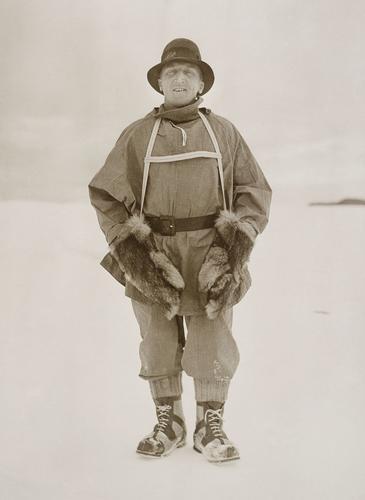
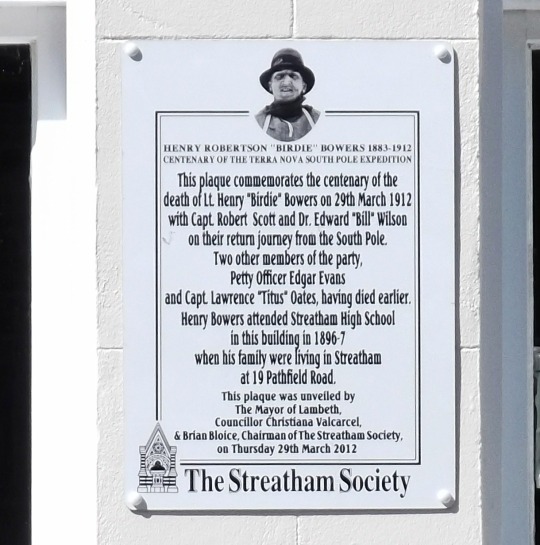


March 29th 1912 is the estimated death of Explorer Henry ‘Birdie’ Robertson Bowers.
Bowers was born on 29th July 1883 in Greenock.
After his father, a naval captain, died in Rangoon, his mother raised him from the age of three with his two older sisters. The family moved to Streatham, London when Henry was around 13, he joined the merchant navy on leaving school and by the time he was 21 had sailed around the world four times on a cargo ship, The Loch Torridon which became famous as one of the most perfect four-masted barques ever built.
“Birdie” went on to join the Royal Indian Marine Service in 1905 and as sub lieutenant saw service in Ceylon and Burma then commanded a river gunboat on the Irrawaddy. He later served on HMS Fox, preventing gun-running in the Persian Gulf.
In 1908 Bowers joined Captain Robert Falcon Scott’s Terra Nova expedition after reading about Scott’s earlier expeditions including his journey on The Discovery. Although he was only meant to be a member of the ship’s crew Scott was so impressed with Bowers he made him a member of the shore team.
When the party made it to the South Pole it was Bowers who found the flag Amundsen had planted and the tent the Norwegian explorer had used as camp when they beat the British team there 35 days previously, Bowers was the navigator in the team and is said to have taken most of the photos and it was he who fixed the exact location of the geographic South Pole for the Polar party.
On there way back from the Pole probably one of the most famous events in exploration occurred when Captain Lawrence Oates, who had been slowing the party down after his foot became frostbitten and gangrenous, spoke the words “I am just going outside, I may be some time”. It was a courageous decision by Oates to let the team go on without him and stand a better chance of getting back safely.
By now they had already lost one crew member after a fall in mid February, Captain Scott, Bowers and Dr. Edward “Bill” Wilson ploughed on for three more days covering 20 miles, a blizzard halted them on March 20th, forcing them to stop, the snow storm lasted for days longer than expected and the trio, exhausted, cold and hungry, some 11 miles short of their next food depot could not continue. Scott’s last diary entry read….
“March 29th, 1912
Since the 21st we have had a continuous gale from W.S.W. and S.W. We had fuel to make two cups of tea apiece and bare food for two days on the 20th. Every day we have been ready to start for our depot 11 miles away, but outside the door of the tent it remains a scene of whirling drift. I do not think we can hope for any better things now. We shall stick it out to the end, but we are getting weaker, of course, and the end cannot be far.
It seems a pity, but I do not think I can write more.
R. SCOTT.
For God’s sake look after our people.”
On or after this the three men perished, they were found by a search party the following spring on 12 November 1912. The search party collapsed the tent over them, thus burying them where they lay under a snow cairn topped by a cross made from a pair of skis. Among the items they found and took back with them were the Kodak film rolls with the photographs at the South Pole and geological specimens which later proved the Gondwana theory.
16 notes
·
View notes
Text
British presence in the Straits Settlements […] (Penang, Singapore and Melaka) as a whole opened the way […]. Governor Andrew Clarke [...] clearly intended that economic botany should follow the quest for tin. Hardly three months after the [signing of the treaty legitimising British control in Malaya] [...] the Governor pressed Lord Carnarvon, Secretary of State for the Colonies, himself a keen botanist and collector, for the services of a ‘scientific botanist’. [...] Intimate plant knowledge among local [people] [...] assisted the discovery of many [plants valuable to European empire] [...] and the absorption of a number of vernacular names such as kempas (Koompassia), pandan (Pandanus) and nipah (Nypa) into scientific nomenclature. Equally, indigenous names for timbers, pre-eminently meranti and cengal, attained the status of trade names on the international market. Malay knowledge [...] proved also invaluable for commerce and [...] industries.
The Great Exhibition of 1851 at the Crystal Palace in Hyde Park, which displayed representative samples of colonial resources, was a microcosm of empire. Empire [...] co-sponsored the surveying, mapping and inventorying of people, lands and products for the ends of imperial power. Tropical nature, once a source [...] of wonderment, was brought to the domestic market place.
High on the imperial economic agenda were the Malayan territories, the source of gutta percha (from Palaquium gutta). Ingeniously adapted by the Malays [...], the plastic qualities of gutta percha were investigated for medical and industrial use by the [English East India] Company surgeons, T. Mongtomerie (1819-43) and T. Oxley (1846-57). [...] At the same time Oxley successfully pioneered the use of gutta percha for plastering fractures and preserving vaccine, the latter hitherto unable to be kept even for a few days. When a Prussian artillery Officer [...] then perfected its use for insulating telegraph cables, the product immediately gained strategic importance for the empire. Similar adaptations of other indigenous uses of plants paid dividends to industry and agriculture. [...]
---
The emergence of Hevea rubber in the Peninsula, superseding gutta percha as an industrial product was, again, the result of scientific exchange within the close-knit colonial botanical network [...] [following] [t]he illegal exportation by Kew [Royal Botanic Gardens in London] of the seedlings from South America to Ceylon and the Singapore Botanic Gardens [...]. Out of the seedlings sent in 1877 to Singapore, seven were planted by Hugh Low in the Perak Residency Garden. These and those raised in the Botanic Gardens furnished the seeds for the first plantations.
Though an introduced species, indigenous knowledge [...] of a wide variety of gums and exudates [...] benefited the plantation industry.
This [...] scored a major triumph for the colonial plantation industry. [...]
Large areas of Melaka had already been laid to waste by [...] a fast-growing variety of Brazilian cassava introduced in 1886 by Cantley.
The same cultivators soon turned the Imperata grasslands to rubber, but its rapid spread meant that a number of native plant species either became very rare or were entirely exterminated. The wild ancestor of the domestic mangosteen (Garcinia mangostana) is a likely example. [...] During his visit to Singapore in 1854 Wallace identified, within just a square mile, some 700 species of beetles [...].
---
All text above by: Jeyamalar Kathirithamby-Wells. "Peninsular Malaysia in the context of natural history and colonial science." New Zealand Journal of Asian Studies Volume 11 Number 1. 2009. [Bold emphasis and some paragraph breaks/contractions added by me.]
56 notes
·
View notes